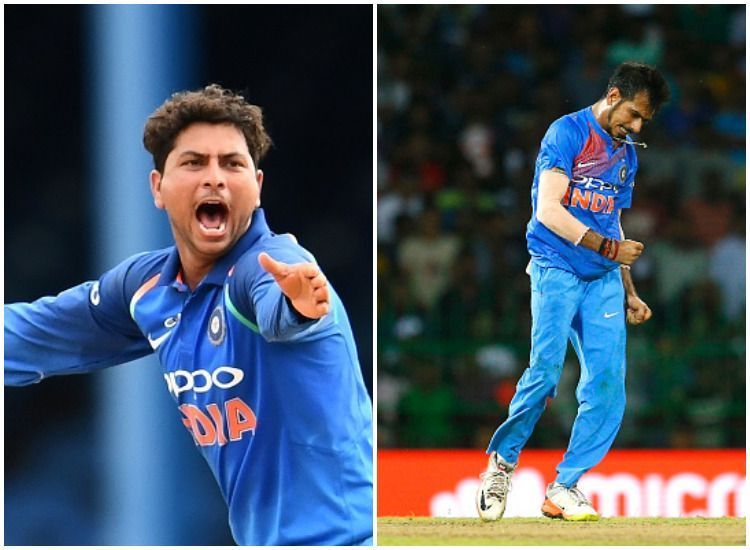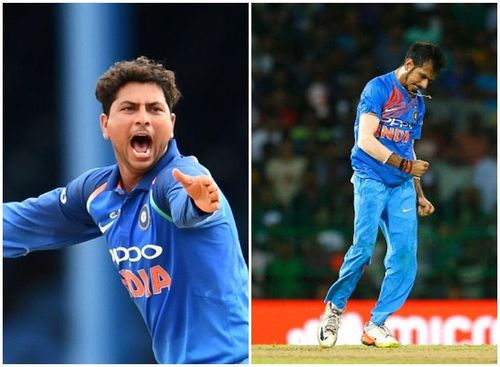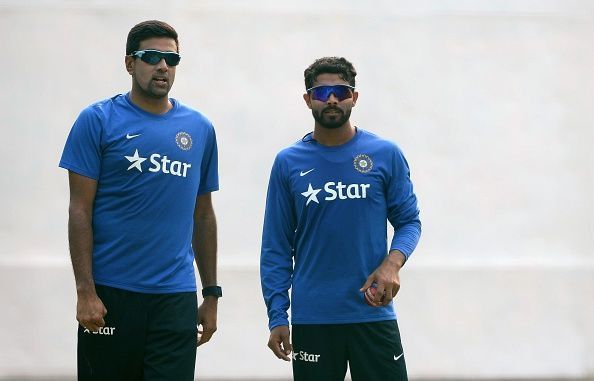
Why wrist-spin is the way forward for Indian cricket

India has a long history of producing illustrious wrist-spinners due to the prevalence of conducive surfaces and adequate infrastructure catering to their needs. The likes of Subhash Gupte, Bhagwath Chandrasekhar and Anil Kumble are unarguably in the upper echelons of the list. India has produced numerous other leg-spinners such as Narendra Hirwani, Laxman Sivaramakrishnan and Piyush Chawla. However, neither of them could keep their places in the team in the long run.
After contributing significantly to India's limited-overs success from 2011 to 2015, the white-ball prowess of finger-spinners Ravichandran Ashwin and Ravindra Jadeja gradually began to decline even as flatter pitches and shorter boundaries started to call for the advent of wrist-spinners in recent times.
Why wrist-spin is extremely effective
A wrist-spinner uses his palm to generate spin unlike off spinners, who depend more on their fingers. Off-spinners tend to use their arm to generate more pace and bounce. While wrist-spinners with the ball between the index and the middle fingers, the ring finger helps in generating more spin with the back of the palm facing the bowler. The extra effort from the palm helps the bowler to hit the deck hard and procure bounce from the pitch.
A traditional-off spinner can do a similar job only when the pitch offers bounce. In places outside the subcontinent where pitches are generally rock hard, wrist-spinners may produce better output than their counterparts. On Asian tracks, the turning nature of the pitch along with the bounce generated by a wrist-spinner makes him a more potent weapon than a conventional finger spinner. The legendary Shane Warne is the ultimate prototype of a champion wrist-spinner who has reached exalted heights across a wide variety of conditions.
In a typical contest between a right-handed batsman and a leg-spinner, the batsman tends to play the square drive or the flick or even the inside out shot in order to release the pressure. There is always an element of risk getting the leading edge while flicking the leg spinners or chances of getting a thick top edge while trying to drive the ball due to the bounce.
How Kuldeep and Chahal are keeping Ashwin and Jadeja out of the limited-overs teams

In limited overs cricket, it becomes important to curb runs in the middle overs. The spinners are generally given the responsibility during this crucial phase. But with the onset of field restrictions, the current generation of batsmen don’t hesitate to take risks. This is an area where a wrist-spinner could come in handy due to his attacking style of bowling. Not only do they control the scoring but they also have the ability to pick wickets.
Most of the teams are now equipped with at least one wrist spinner because of their inbuilt attacking nature. India has started to following the recent global trends. The debacle in the 2017 Champions Trophy final seems to have finally opened the eyes of the team management.
The dynamic wrist-spin duo of Yuzvendra Chahal and Kuldeep Yadav are showing the way forward for India. The leg-spinner was instrumental in the considerably fruitful campaigns of Royal Challengers Bangalore (RCB) in the 2015 and 2016 seasons. He came into the limelight during the T20I series against England earlier this year. Chahal was preferred ahead of Jadeja and Ashwin for the series against Sri Lanka and Australia. He applied breaks on the free flow of runs from the opposition and picking wickets at crucial junctures. The vital two-wicket spell against NZ in the final ODI at Kanpur was another proof of his remarkable development in his brief international career thus far.
Kuldeep caught the attention of onlookers during the 2014 edition of the now defunct Champions League T20. His performance helped him earn an international call in the subsequent series against West Indies at home. But the chinaman exponent didnt feature in any of the matches and had to wait for nearly two and a half years to earn his next call. Despite making a sensational Test debut against Australia at Dharamsala earlier this year, he was able to receive his next opportunity only during the limited-overs trip to West Indies. From then on, he has never looked back. The hat-trick against Australia in the Kolkata ODI has raised the expectations.
With the upcoming overseas tours in mind and the 2019 World Cup set to be held in England, the team management is ensuring that these two rising stars are being given ample exposure and are groomed in the right manner. Chahal and Kuldeep must be persisted with even if they have the odd bad series here and there. The talented duo are definitely the future of white-ball spin in India.